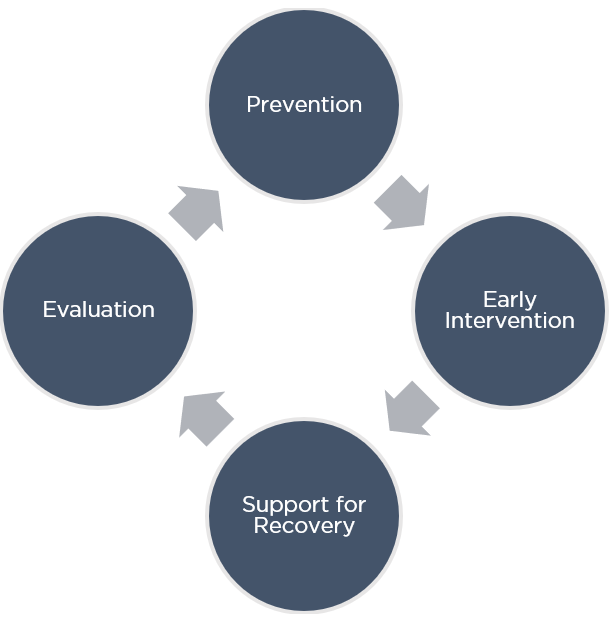HR @ Your Service
In past practice, it was typical that ill, injured or employees with a disability were often expected to be away from their workplace until such time that they were fully recovered and able to return to work at their full capacity. However, studies show that the longer an employee is away from the workplace, the less likely they are to return, with only 20% of workers returning to their job after one year of absence.[1]
In 2012, it was found that absenteeism cost Canadian companies $16.6 billion in productivity, an average of 2.4% of each employers’ gross payroll.[2] Also worth considering are the costs of overtime, increased benefit premiums, the loss of employees’ organizational knowledge, the need to hire and train replacement employees, and the potential added workload to other employees, which can result in increased stress, lower morale, and as a result, further absences.
From an employee’s perspective, being away from work can be detrimental, contributing to a reduced or loss of income, a higher risk of mental illness, such as depression, and the increased chance of a chronic disability.
A worker earning $50,000 a year who becomes disabled at age 35 will lose almost $400,000 in the 30 years before retirement, based on 60% long-term disability coverage. If forced onto social assistance, the cost will rise to almost $800,000.
Disability Management Programs
Disability management programs are designed to promote the health, safety and wellness of employees in the workplace, and to support employees who are or are at risk of missing work due to an illness, injury or disability to remain at or return to the workplace.
A comprehensive and successful disability management program is typically comprised of four components – prevention, early intervention, support for recovery and evaluation.

Prevention
Prevention provides an opportunity to support employee health and prevent absenteeism. We suggest organizations track the frequency and reasons for employee absenteeism in the workplace. Tracking absences related to personal reasons (specifically illness, disability, personal/family responsibilities, excluding maternity/parental leaves) allows employers to analyze patterns and health risks to identify and address root causes of absenteeism.
Employers can also look at utilizing data provided by their benefit providers (i.e., short-term and long-term disability, Employee Assistance Programs, drug costs, etc.) to gain further insight into the potential health issues employees may be experiencing.
Some employers have programs in place to prevent employees from missing work or support employees in the workplace. This may include group benefit programs that contribute to employee wellness (i.e., paramedical benefits or Employee Assistance Programs) and health and safety standards and programs to identify, prevent or eliminate hazards within the workplace.
Employers may also consider being proactive and implementing wellness programs and initiatives that, can, as an added benefit, increase employee engagement and promote employee health and well-being. This can include developing awareness of mental, physical, and financial wellness, and offering fitness programs.
Early Intervention
Studies have demonstrated that, in cases where it is safe to do so, employees that remain at work or return to work as soon as possible have better health outcomes.
Collaboration is key to ensuring a successful disability management program. Employers need to consider all stakeholders that need to be involved and establish responsibilities; this may include but is not limited to the employee, their healthcare provider, the employee’s supervisor, and, where applicable, insurance providers and the union.
Employers should work with the employee and identified stakeholders to develop plans that help the employee remain at or return to work.
Remain-at-work and return-to-work plans have the same function – they are tools developed to proactively assist employees to remain at or return to the workplace in a safe and timely manner. There is no one size fits all approach for these plans; each workplace and employee’s set of circumstances will require different approaches and solutions. It is important that in determining these plans that the employer works closely with the healthcare provider to understand how the employee’s medical condition or injury impacts their ability to do their job, confirming if the restrictions/limitations are temporary or permanent and the prognosis for recovery.
While a remain-at-work or return-to-work plan is typically transitional and temporary in nature, some employees may require permanent accommodations.
Support for Recovery
The goal for organizations is to identify a plan to support the employee at work, preferably in the position they held prior to the absence occurring to ensure they can resume their work routines and be amongst their colleagues. However, there are instances where this isn’t safe or feasible, depending on an employee’s capabilities. In these cases, other alternatives should be considered such as:
- A modified job in the same department
- A different job in the same department
- A similar job in a different department
- A different job in a different department
All employers have the legal duty to accommodate their employees, up to the point of undue hardship. This requires organizations to identify and remove barriers to allow all workers to participate fully within the workplace.
After a thorough review of the employee’s functional capabilities and limitations, the employer, the employee, and the stakeholders can identify options for accommodation. Once implemented, the employer should maintain ongoing communication with the employee and accommodation plans should be regularly monitored and reviewed to allow for adjustments and modifications, as needed, including upon reassessment by the employee’s healthcare provider.
Evaluation
Disability management programs should be regularly reviewed and evaluated to ensure they are meeting the goals and needs of the organization, with adjustments being made as necessary.
By implementing a holistic approach to disability management, employers can reduce the cost and impact of employee absenteeism while supporting the wellbeing of their employees and fostering a healthy organizational culture.
